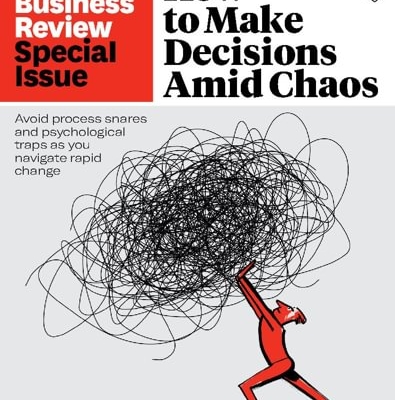 https://www.afterburner.com/wp-content/uploads/2025/05/Flawless-Execution-prevents-Cognitive-Decline.jpg
1365
2048
Ansley Anchors
/wp-content/uploads/2024/07/Afterburner-Logo-Resize-Fullcolor-300x93.png
Ansley Anchors2025-05-29 10:02:192025-10-15 15:56:14How FLEX Helps Leaders Combat the Cognitive Decline Epidemic
https://www.afterburner.com/wp-content/uploads/2025/05/Flawless-Execution-prevents-Cognitive-Decline.jpg
1365
2048
Ansley Anchors
/wp-content/uploads/2024/07/Afterburner-Logo-Resize-Fullcolor-300x93.png
Ansley Anchors2025-05-29 10:02:192025-10-15 15:56:14How FLEX Helps Leaders Combat the Cognitive Decline EpidemicIt happens time and time again. A project or endeavor comes to an end, and the team moves right into the next one. Sales teams jump from one quarter to the next, marketing teams start filling out the same campaign planning template as the previous campaign is drawing to a close. What’s missing? Reflection on the just-completed mission – or, as we call it, a debriefing session.
After your team executes on your mission, taking the time for a well-organized debriefing session is crucial for elevating your performance to elite levels during your next mission. This is true whether the previous mission was successful or – and yes, we know this word can make teams cringe – a failure. Reflecting on missteps won’t change the circumstances of that particular endeavor, but it will put your team in a better position to avoid mission failure in the next try. Even when you’ve successfully completed a project, there will always be some sort of takeaway that, when integrated into the next planning session, can accelerate learning and expand upon effective tactics.
Here are some of the ways a well-organized, iterative debriefing session can empower your team to improve upon mistakes and build upon successes – and why any team leader should implement it into their protocol.
Closing the Loop
While it’s important to learn from the past, it’s never a great idea to live in it. A debriefing session will allow you to formally conclude a task or project, drawing a line in the sand between one mission and another. It provides an appropriate means to putting the past behind you while allowing you to grow from the endeavor prior to moving on.
Fills the Need for Effective Learning
When done promptly, the cause and effect analysis of a debriefing session allows your team to capitalize on meaningful learning that time delays could inhibit or prevent. How long can you repeat one mistake before it’s formally integrated into planning? How does your organization benefit from the experiences of its members if there is no method of aggregating the learning outcomes of these missions?
Debriefing Sessions are the Catalyst for Change
An unmet mission objective is the black sheep in a herd of organizational operations. Missed numbers and deadlines can be the result of a number of small setbacks or one major misstep. Regardless of what caused mission failure, it’s time to make a change. This change can be one that is easily integrated into operations or one that you can only address in contingency planning. A debriefing session will help you identify that root cause – without that, how will you know what to change?
There’s Cause…Then There’s Root Cause
It isn’t enough to recognize that you’ve won or lost a battle. Your team must look below the superficial causes to guarantee it wasn’t luck or some other force at work. Digging deeper is an essential part of the STEALTH Debrief because prominent, recurring root causes can fester and grow if misidentification allows them to go unaddressed. A debriefing session will provide an opportunity to sort through the ambiguities in your complex environments to improve at the core organizational level.
Specific and Actionable Lessons Learned
The lessons you learn from a debriefing session can result in a change or amendment to existing procedures, further development of a program or plan, or improvement of training standards. It may also simply result in a list of steps for use in future planning. Regardless of how you integrate your Lessons Learned into future use, each one should have an action tied to it to ensure future benefit. You’ve learned what went right or wrong – how will that lesson inform your future actions?
Provides a Rapid, Simple Approach to Continuous Improvement
The debriefing session should be performed after missions of all sizes: large and small, long-term and short-term, one individual or the entire company. When you achieve a culture of Debriefing with the intent to share and leverage Lessons Learned, improvement is nearly continuous. These Lessons Learned are pumped into the system and applied to missions of all kinds throughout the organization. At this point, your organization achieves accelerated learning and continuous improvement by decreasing the size of the learning curve through shared experiences.
A Debriefing Session Will Foster Learning, Openness, and Honesty
Debriefing is a group learning process, a forum in which team members learn from themselves and from each other. When performed properly following the STEALTH framework, the Debrief is nameless and rankless, focusing the conversation on analyzing what went wrong instead of who caused it to happen. Because this process encourages self-identification of areas of improvement, beginning with the group leader, it organically transforms into a process to accelerate organizational performance rather than point fingers or assign blame.
Leadership Development
Because the Debrief is leader-led, the success of that process is dependent upon that leader’s ability to demonstrate the qualities that he or she wants from team members. This helps to build current leaders who are tasked with establishing a culture of Debriefing and driving adoption in their teams. It also nurtures the leadership traits in individual team members who observe the explicit and implicit leadership qualities demonstrated by current leadership.
We could break down and examine each of these benefits even further, but one thing that we can’t emphasize enough is that these benefits only occur when the Debrief follows a framework and the team adheres to the merits of “nameless and rankless”. If conducted haphazardly or with little regard for the importance of blameless review, a Debrief can easily do more harm than good. To avoid this, your team should structure your Debriefs in a way that establishes an open, honest environment.
Share This Post
More Like This
 https://www.afterburner.com/wp-content/uploads/2025/05/Flawless-Execution-prevents-Cognitive-Decline.jpg
1365
2048
Ansley Anchors
/wp-content/uploads/2024/07/Afterburner-Logo-Resize-Fullcolor-300x93.png
Ansley Anchors2025-05-29 10:02:192025-10-15 15:56:14How FLEX Helps Leaders Combat the Cognitive Decline Epidemic
https://www.afterburner.com/wp-content/uploads/2025/05/Flawless-Execution-prevents-Cognitive-Decline.jpg
1365
2048
Ansley Anchors
/wp-content/uploads/2024/07/Afterburner-Logo-Resize-Fullcolor-300x93.png
Ansley Anchors2025-05-29 10:02:192025-10-15 15:56:14How FLEX Helps Leaders Combat the Cognitive Decline Epidemic https://www.afterburner.com/wp-content/uploads/2024/09/Christian-_Boo_-Boucousis-on-stage-1.jpeg
1066
1600
Nate Riggins
/wp-content/uploads/2024/07/Afterburner-Logo-Resize-Fullcolor-300x93.png
Nate Riggins2024-12-19 14:08:102025-10-15 15:56:16How to Pick the Right Guest Speaker for Your Event
https://www.afterburner.com/wp-content/uploads/2024/09/Christian-_Boo_-Boucousis-on-stage-1.jpeg
1066
1600
Nate Riggins
/wp-content/uploads/2024/07/Afterburner-Logo-Resize-Fullcolor-300x93.png
Nate Riggins2024-12-19 14:08:102025-10-15 15:56:16How to Pick the Right Guest Speaker for Your Event https://www.afterburner.com/wp-content/uploads/2024/09/Audience-reaction-2.jpeg
1365
2048
Nate Riggins
/wp-content/uploads/2024/07/Afterburner-Logo-Resize-Fullcolor-300x93.png
Nate Riggins2024-02-09 17:02:342025-10-15 15:56:18Four Key Items to Include in Your Next Corporate Event
https://www.afterburner.com/wp-content/uploads/2024/09/Audience-reaction-2.jpeg
1365
2048
Nate Riggins
/wp-content/uploads/2024/07/Afterburner-Logo-Resize-Fullcolor-300x93.png
Nate Riggins2024-02-09 17:02:342025-10-15 15:56:18Four Key Items to Include in Your Next Corporate Event https://www.afterburner.com/wp-content/uploads/2024/09/embracing-failure-afterburner-1-scaled-1.jpg
1920
2560
Nate Riggins
/wp-content/uploads/2024/07/Afterburner-Logo-Resize-Fullcolor-300x93.png
Nate Riggins2024-01-09 22:52:542025-10-15 15:56:18Reimagining Your Sales Kickoff: Infusing Innovation and Connection
https://www.afterburner.com/wp-content/uploads/2024/09/embracing-failure-afterburner-1-scaled-1.jpg
1920
2560
Nate Riggins
/wp-content/uploads/2024/07/Afterburner-Logo-Resize-Fullcolor-300x93.png
Nate Riggins2024-01-09 22:52:542025-10-15 15:56:18Reimagining Your Sales Kickoff: Infusing Innovation and Connection https://www.afterburner.com/wp-content/uploads/2024/09/fortune-cookies-1400x933-1.jpeg
933
1400
Nate Riggins
/wp-content/uploads/2024/07/Afterburner-Logo-Resize-Fullcolor-300x93.png
Nate Riggins2024-01-02 18:24:072025-10-15 15:56:19Want to make better business predictions? Flawless Execution is the answer.
https://www.afterburner.com/wp-content/uploads/2024/09/fortune-cookies-1400x933-1.jpeg
933
1400
Nate Riggins
/wp-content/uploads/2024/07/Afterburner-Logo-Resize-Fullcolor-300x93.png
Nate Riggins2024-01-02 18:24:072025-10-15 15:56:19Want to make better business predictions? Flawless Execution is the answer. https://www.afterburner.com/wp-content/uploads/2024/09/three-fighter-jets-maneuvering-in-sequence-min-1.jpeg
1133
1920
Nate Riggins
/wp-content/uploads/2024/07/Afterburner-Logo-Resize-Fullcolor-300x93.png
Nate Riggins2024-01-02 16:08:452025-10-15 15:56:19How to Build Accountability in the Workplace – and Why It Matters
https://www.afterburner.com/wp-content/uploads/2024/09/three-fighter-jets-maneuvering-in-sequence-min-1.jpeg
1133
1920
Nate Riggins
/wp-content/uploads/2024/07/Afterburner-Logo-Resize-Fullcolor-300x93.png
Nate Riggins2024-01-02 16:08:452025-10-15 15:56:19How to Build Accountability in the Workplace – and Why It Matters https://www.afterburner.com/wp-content/uploads/2024/09/purposeful-action-afterburner-1.jpg
1080
1920
Nate Riggins
/wp-content/uploads/2024/07/Afterburner-Logo-Resize-Fullcolor-300x93.png
Nate Riggins2023-12-21 15:23:142025-10-15 15:56:20Unlocking the Power of Purposeful Action in Work and Life
https://www.afterburner.com/wp-content/uploads/2024/09/purposeful-action-afterburner-1.jpg
1080
1920
Nate Riggins
/wp-content/uploads/2024/07/Afterburner-Logo-Resize-Fullcolor-300x93.png
Nate Riggins2023-12-21 15:23:142025-10-15 15:56:20Unlocking the Power of Purposeful Action in Work and Life https://www.afterburner.com/wp-content/uploads/2024/09/how-to-make-better-decisions-afterburner-1.jpg
1080
1920
Nate Riggins
/wp-content/uploads/2024/07/Afterburner-Logo-Resize-Fullcolor-300x93.png
Nate Riggins2023-12-12 17:38:372025-10-15 15:56:20Empowering Decisions Through Debrief Culture
https://www.afterburner.com/wp-content/uploads/2024/09/how-to-make-better-decisions-afterburner-1.jpg
1080
1920
Nate Riggins
/wp-content/uploads/2024/07/Afterburner-Logo-Resize-Fullcolor-300x93.png
Nate Riggins2023-12-12 17:38:372025-10-15 15:56:20Empowering Decisions Through Debrief Culture
Mastering Decision-Making in a World of Chaos: Lessons from Harvard Business Review Magazine
Business Culture, Leadership, MotivationAbout Us
Building Strong Teams Through the Guidance of Fighter Pilot Keynote Speakers.


